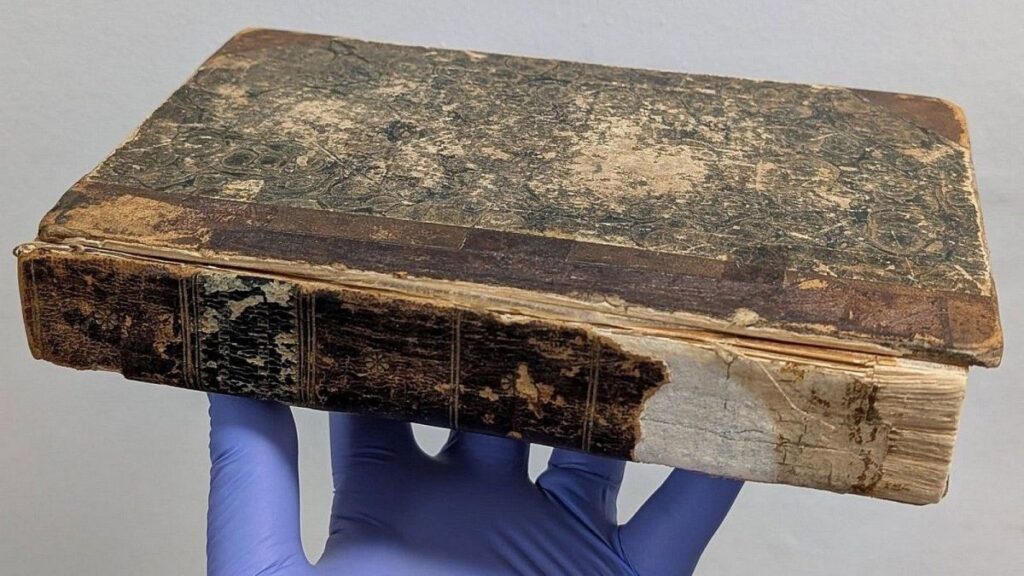Talk about a morbid read…
A book bound in the skin of one of the UK’s most notorious murderers is about to go on display at Moyse’s Hall Museum in Bury St Edmunds, Suffolk, UK.
The tome, reportedly made using the skin of William Corder, who was convicted of killing Maria Marten in the Red Barn Murder in 1827, was found on a bookshelf in the museum’s office.
Unlike the previously known copy of the book, “An Authentic and Faithful History of the Mysterious Murder of Maria Marten” by James Curtis, which was completely covered in human skin, the new find only has skin inserts on the spine and corners.
The first book was put on display at Moyse’s Hall Museum in 1933 and it wasn’t until recently that curators realised, after looking through the museum’s catalogue, that there was a second book that had been overlooked…
For those of you not familiar with the bleak tale, Maria Marten was shot dead by William Corder. Her body was discovered in a local landmark, the Red Barn, after her stepmother Ann Marten reported disturbing dreams pointing to the burial site.
It is believed that Corder and Maria Marten were lovers and that he lured her to the Red Barn, saying they would run away to Ipswich to get married. Corder was arrested in London, tried in Bury St Edmunds, and publicly hanged in 1828.
After the execution, the criminal’s body was anatomized, and his skin was used to bind the report of the murder and the story of his trial.
The Red Barn Murder has provoked numerous songs, plays and TV series. Most recently, a 1971 song recorded by folk singer Shirley Collins and the Albion Country Band was performed by Florence Pugh in the (brilliant) 2018 TV adaptation of John Le Carré’s spy novel “The Little Drummer Girl”.
“The murder continues to be interpreted and reinterpreted in popular culture to this day,” said Daniel Clarke, heritage officer at West Suffolk council.
“Do we think all books bound in skin should be on display? That would be debated on a case-by-case basis,” said Clarke. “In this instance, it is a stark and emotive set of artefacts that give us the chance to discuss the anatomising of the criminal corpse. Uncomfortable history, yes, but if we are to learn from history we must first face it with honesty and openness.”
Clarke added that the museum does not “deal with this as a salacious artefact but as a window into the past”.
The rather gruesome book binding practice was a common procedure in the 19th century, known as anthropodermic bibliopegy.
Famous examples of anthropodermic bibliopegy include editions of Holbein’s “Dance of Death” and the French book “La pluralité des mondes habités” by astronomer Camille Flammarion. Legend has it that a female admirer of Flammarion bequeathed her skin to bind his book – which is stamped “reliure en peau humaine, 1880 (“human skin binding, 1880”).
Due to containing human remains, books bound in human skin are considered by many to be problematic.
Last year, Harvard University removed the human skin, stolen post-mortem off an unidentified female hospital patient, from “Des destinées de l’âme,” due to “the ethically fraught nature of the book’s origins and subsequent history”.
Additional sources • Moyse’s Hall Museum – BBC
Premium IPTV Experience with line4k
Experience the ultimate entertainment with our premium IPTV service. Watch your favorite channels, movies, and sports events in stunning 4K quality. Enjoy seamless streaming with zero buffering and access to over 10,000+ channels worldwide.

















